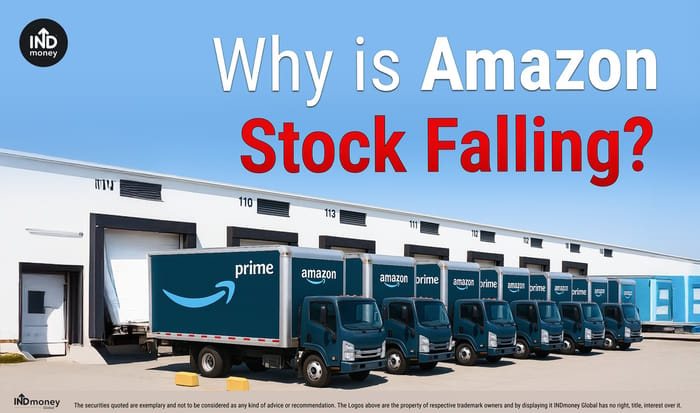
- Why the FTC went after Amazon
- Amazon’s $2.5 billion settlement breakdown:
- The $2.5B Penalty Hits Amazon Where It Hurts
- Who Will Benefit From Amazon’s Misery?
- What Amazon Must Change
- Wider Implications For Subscription Models
Amazon stock ended in the red of September 25 after the company agreed to a record $2.5 billion settlement. This came after U.S. regulators accused the e-retail giant of misleading 35 million users into signing up for Amazon Prime memberships they never intended to buy.
It is the largest Federal Trade Commission (FTC) fine for a rule violation. It is also one of the biggest consumer restitution awards in the agency’s history. Following the ruling, Amazon share price fell over a percent on September 25, according to Google Finance data. Amazon stock has now fallen 6% this week.
Let’s break down the whole lawsuit, who gets the refund from Amazon, and what this ruling means.
Why the FTC went after Amazon
The FTC accused Amazon of using “dark patterns” that nudged shoppers into Amazon Prime through pre-checked boxes and confusing checkout prompts such as “Get FREE Same-Day Delivery.” Once in, canceling Prime Subscription was designed to feel like running a maze.
Regulators said the cancellation process involved multiple screens and hidden links that discouraged exits. They argued that this violated the FTC Act and the Restore Online Shoppers’ Confidence Act.
FTC Chair Andrew Ferguson called it a “monumental win” against deceptive subscription traps. “The evidence showed that Amazon used sophisticated subscription traps designed to manipulate consumers into enrolling in Prime and then made it exceedingly hard for consumers to end their subscription,” he said.
Amazon’s $2.5 billion settlement breakdown:
- $1 billion civil penalty: Money Amazon must pay directly to the FTC as punishment, marking the biggest fine ever for breaking an FTC rule.
- $1.5 billion restitution: Refunds that will go back to 35 million Amazon Prime users, the second-largest consumer payback the FTC has ever ordered.
The scale is significant as it is a shot across the bow at every company that relies on complex opt-outs to drive growth.
The $2.5B Penalty Hits Amazon Where It Hurts
Amazon can take the financial blow, but it is hardly pocket change. The company earned $18.2 billion in net income in Q2 2025, meaning the $2.5 billion settlement wipes out roughly 14 percent of its profit for that quarter. That is significant, especially because Prime is not a side stream.
Amazon Prime subscriptions generated $23.9 billion in the first half of 2025 and serve as the glue keeping customers tied to the e-commerce company’s vast ecosystem of shopping, streaming and cloud services. Any loss of trust in Prime puts pressure on Amazon's most dependable growth driver.
In its response to the ruling, Amazon defended the program, insisting sign-ups and cancellations are already straightforward and that Prime delivers “substantial value” to members.
Who Will Benefit From Amazon’s Misery?
The settlement covers U.S. customers who signed up for Prime between June 2019 and June 2025 through the checkout flows flagged by regulators.
- Eligible users will automatically receive refunds, no claims required.
- Average payout is expected to be $51 per person.
- Payments will be distributed within 90 days of court approval, mostly through electronic refunds tied to existing payment methods.
Consumers who struggled to cancel during that period can also file claims. If fewer people qualify than expected, the FTC will rerun the refund process until at least $1 billion is paid out.
What Amazon Must Change
The FTC order requires Amazon to redesign Prime sign-up and cancellation processes. That includes:
- A clear “Decline Prime” button that does not guilt trip users.
- Full disclosure of price, auto-renewal terms and cancellation rules before sign-up.
- A cancellation process that is just as easy as signing up.
- An independent compliance monitor to make sure rules are followed.
These changes are aimed at killing the so-called “roach motel” design, where getting in is easy but getting out is nearly impossible.
Wider Implications For Subscription Models
This is not just about Amazon. The settlement sets a precedent for how regulators may go after subscription services across tech, media, finance and software. Streaming platforms that make it easy to start but a headache to cancel are now on notice. Fintech apps that hide recurring fees inside complex user flows will likely face scrutiny too.
Regulators are drawing a line: enrollment and cancellation must be equally easy. For consumers, this case signals a shift toward digital fairness. For companies, it is a warning that design choices meant to maximize sign-ups at the expense of transparency are now a legal liability.
Disclaimer:
The content is meant for education and general information purposes only. Investments in the securities market are subject to market risks, read all the related documents carefully before investing. Past performance is not indicative of future returns. The securities quoted are exemplary and are not a recommendation. This in no way is to be construed as financial advice or a recommendation to invest in any specific stock or financial instrument.The figures mentioned in this article are indicative and for general informational purposes only. Readers are encouraged to verify the exact numbers and financial data from official sources such as company filings, earnings reports, and financial news platforms. The Company strongly encourages its users/viewers to conduct their own research, and consult with a registered financial advisor before making any investment decisions. All disputes in relation to the content would not have access to an exchange investor redressal forum or arbitration mechanism. Registered office address: Office No. 507, 5th Floor, Pragya II, Block 15-C1, Zone-1, Road No. 11, Processing Area, GIFT SEZ, GIFT City, Gandhinagar – 382355. IFSCA Broker-Dealer Registration No. IFSC/BD/2023-24/0016, IFSCA DP Reg No: IFSC/DP/2023-24/010.